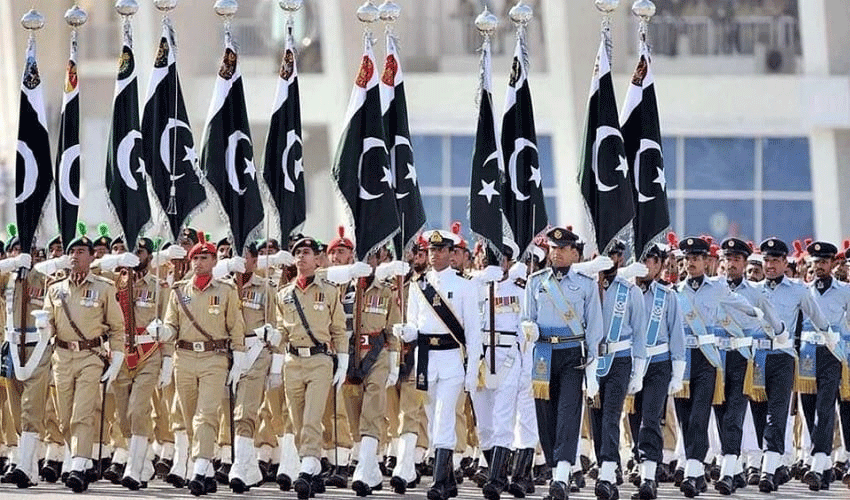Defence Budget Grows 20% Even as Overall Spending Is Trimmed

Defence Allocation Sees 20% Surge Amidst Austerity Measures
Despite broader fiscal tightening, the government has increased the defence budget by 20%, signaling the strategic importance of military preparedness and national security in today’s geopolitical climate. While most ministries have seen budget reductions or minimal increases due to ongoing economic constraints, the defence sector has emerged as a clear exception in the 2025 fiscal year budget.
Key Defence Budget Highlights
The defence allocation for FY 2025 stands at a significant figure, reflecting:
- A 20% increase over the previous year’s defence outlay
- Greater focus on military modernization and procurement
- Expansion in research and development for defence technologies
- Enhanced spending on border infrastructure and cybersecurity
- Increased allocations for armed forces salaries, pensions, and welfare
According to officials, the increase addresses long-standing gaps in equipment acquisition, logistics capability, and combat-readiness in view of regional security dynamics.
Strategic Context Behind the Increase
The decision to boost defence funding comes amid rising border tensions, internal security challenges, and a volatile international environment. With global powers increasing military spending and technological development, policymakers view investment in defence as non-negotiable for national sovereignty and deterrence.
Key regional drivers include:
- Tensions at disputed borders
- Maritime security challenges
- Counter-terrorism efforts
- Modern warfare preparedness including cyber and drone threats
- Shifting global alliances and defense diplomacy
Trimmed Expenditures in Other Sectors
In contrast to defence, several ministries—including education, public health, transportation, and social welfare—have witnessed budget cuts or stagnant growth. This reflects the government’s intent to control fiscal deficit, reduce debt burden, and rationalize expenditure while ensuring essential security funding.
While this has drawn criticism from some economic and civil society groups, government representatives argue that a strong defence guarantees peace, which is essential for economic stability and growth.
Where the Defence Budget Will Be Spent
The increased defence allocation is expected to be distributed across key areas:
- Capital Expenditure: New fighter jets, helicopters, naval ships, and tanks
- Defense Research: Investment in AI, robotics, missile systems, and surveillance tech
- Cybersecurity Infrastructure: Strengthening digital warfare capabilities
- Border Security: Development of outposts, radar networks, and high-altitude logistics
- Personnel Benefits: Revision of pay structures, medical benefits, housing, and pensions
Special emphasis will also be placed on local manufacturing under the “Make in Country” defence initiative, supporting indigenous defence industries and reducing reliance on imports.
Economic Concerns and Budget Prioritization
Economists have raised valid concerns about the opportunity cost of increasing defence spending while trimming social sector allocations. With inflation, unemployment, and income inequality on the rise, some experts suggest that overemphasis on defence could hinder inclusive development.
However, government officials counter this argument, saying that security investments create jobs, enhance national pride, attract foreign direct investment (FDI), and build essential infrastructure in remote areas.
Defence Budget in Global Context
Globally, countries like the United States, China, Russia, and India have been consistently increasing their defence spending. The current rise in the national defence budget keeps the country in alignment with global peers, ensuring strategic parity and readiness.
Comparative defence budget increases in 2024–2025:
- United States: +4%
- China: +7.2%
- India: +13%
- Russia: +18%
This confirms the shift in global focus towards military deterrence and strategic dominance, especially in light of increasing geopolitical conflicts and territorial disputes.
Long-Term Vision and Defence Reforms
The increased funding also supports long-term reforms in the armed forces including:
- Restructuring defence procurement procedures
- Creating specialized commands (space, cyber, logistics)
- Enhancing tri-service coordination
- Launching new military academies and training institutes
- Developing high-tech manufacturing hubs
This reflects a broader move toward creating a leaner, tech-driven, agile, and self-reliant military force.
Civil-Military Balance: A Growing Debate
With defence budgets rising year-over-year, questions continue to emerge about the balance between civilian welfare and military preparedness. Civil society organizations urge the government to ensure that defence expansion doesn’t come at the cost of education, healthcare, and climate initiatives.
While acknowledging the need for a strong defence, experts call for greater transparency, accountability, and parliamentary oversight on defence spending, especially for big-ticket acquisitions.
Conclusion
In a fiscal year marked by tight public finances and global economic uncertainty, the 20% increase in the defence budget underscores the government’s prioritization of national security over other sectors. While it may fuel political and economic debate, the decision reflects a long-term vision of building a technologically advanced and strategically prepared military. The challenge lies in balancing military ambition with human development needs in a sustainable and inclusive manner.





